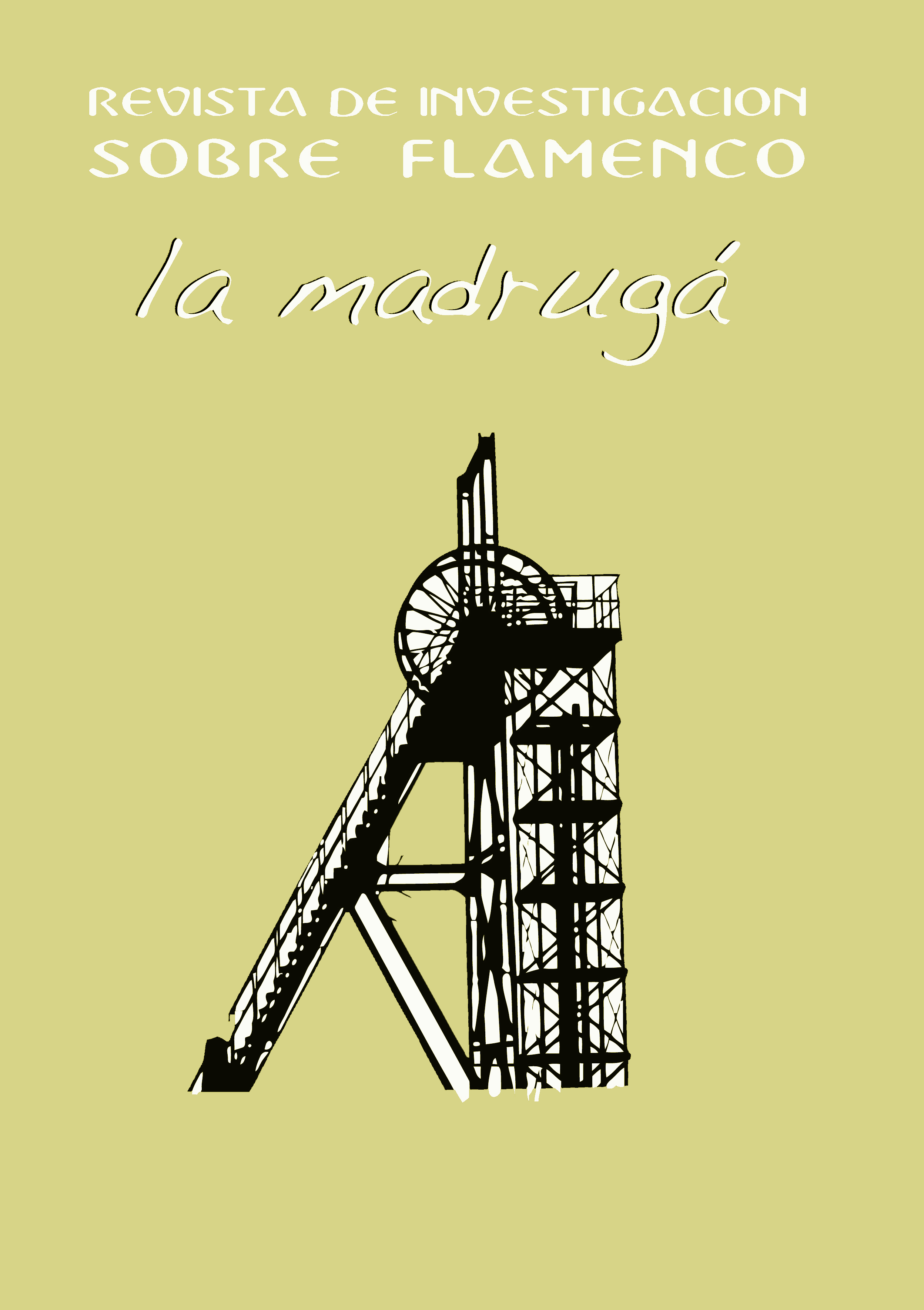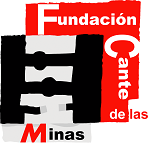The ``jaleo'' as a relationship: materials to think about the ``jaleo''
Abstract
Departing from the author’s position as a student of flamencology at the University of Córdoba, this article offers an analytical journey through the praxis of jalear (cheer on), addressing issues such as its character as a social relation; its imperceptible relevance in the configuration of the singularity of Flamenco cantes; the type of knowledge that jaleos implie; or the concept of time needed to understand the practice of jalear. This article also offers some key notions to analyze the figure of aficionado as a sui generis type of fandom which is characteristics of Flamenco, as well as diverse possible sources to keep investigating the genealogy Flamenco.
Downloads
-
Abstract1178
-
PDF (Español (España))760
References
Aristotle (1983). Physics (books III and IV): translated with introduction and notes by Edward Hussey. New York: Oxford University Press.
Auserón, Santiago (2015). El ritmo perdido: sobre el influjo de la música negra en la canción española. Madrid: Península.
Berger, John (1972). Ways of Seeing. New York: Penguin Books.
Bosch, Eulalia (2000). El presente está solo. En Berger, John. Modos de mirar. Barcelona: Editorial Gustavo Gilli, pp. 7-10.
Cruces Roldán, Cristina (2000). La música andalusí y el flamenco. En Cano García, Gabriel (Dir.). Conocer Andalucía: gran enciclopedia andaluza del siglo XXI (vol. 2: Tartessos, la Bética y Al-Andalus). Sevilla: Ediciones Tartessos.
Cruces Roldán, Cristina (Dir.) (2005). Las mujeres flamencas, etnicidad, educación y empleo ante los nuevos retos profesionales. Sevilla: Instituto de la Mujer y Ministerio de Trabajo y Asuntos Sociales.
Cruces Roldán, Cristina (2012). El flamenco. En Moreno, Isidoro y Agudo, Juan (Coords.). Expresiones culturales andaluzas. Sevilla: Aconcagua Libros. pp. 220-281.
Cruces Roldán, Cristina (2014a). El flamenco como constructo patrimonial: representaciones sociales y aproximaciones metodológicas. Pasos: revista de turismo y patrimonio cultural, vol. 12, n.º 4, pp. 819-835.
Cruces Roldán, Cristina (2014b). El flamenco y la música andalusí: argumentos para un encuentro. Barcelona: Ediciones Carena.
Gamboa, José Manuel (2007). Sernita de Jerez ¡Vamos a acordarnos!: la memoria cabal de su casta. Barcelona: Ediciones Carena.
García de León, Antonio (2016). El mar de los deseos: el Caribe afroandaluz, historia y contrapunto. Ciudad de México: Fondo de Cultura Económica.
Glissant, Édouard (2010). Poetics of Relation. Ann Arbor (MI): The University of Michigan Press.
González Climent, Anselmo (1964) [1953]. Flamencología: toros, cante y baile. Madrid: Editorial Escelicer.
Guattari, Félix (1992). Chaosmose. Paris: Éditions Galilée.
Haraway, Donna (1988). Situated Knowledges: The Science Question in Feminism and the Privilege of Partial Perspective. En Feminist Studies, vol. 14, n.º 3, pp. 575-599.
Horacio (2008). Sátiras. Epístolas. Arte poética (introducciones, traducción y notas de José Luis Moralejo). Madrid: Editorial Gredos.
Illuminati, Augusto (2009). Per farla finita con l’idea de sinistra. Roma: Derive Approdi.
Machado, Manuel (1922). Obras completas (vol. II). Madrid: Editorial Mundo Latino.
Maduell, Mariana (1994). On-stage calls: An ethnolinguistic analysis of spoken language in professional flamenco performance (tesis doctoral). Ann Arbor (MI): U.M.I. Dissertation Services.
Maduell, Mariana and Wing, Alan Miles (2007). The dynamics of ensemble: the case for flamenco. Psychology of Music, 35(4), pp. 591-627.
Maffesoli, Michel (1996). Éloge de la raison sensible. Paris: Grasset & Fasquelle.
Naranjo, Manuel (2002). Percusión y jaleos. En Cruces Roldán, Cristina (Dir.). Historia del Flamenco: siglo XXI. Sevilla: Ediciones Tartessos, pp.119-143.
Nietzsche, Friedrich (1872/2004). El drama musical griego. En El nacimiento de la tragedia. Madrid: Alianza Editorial, pp. 205-224.
Plato (1925). Plato in Twelve Volumes, vol. 9 translated by W.R.M. Lamb. Cambridge (MA): Harvard University Press.
Ridouard, André (2001). Alabanza. En Léon-Dufour, Xavier (Ed.). Vocabulario de Teología Bíblica. Barcelona: Biblioteca Herder. pp. 56-59.
Rodríguez, Raúl (2017). La raíz eléctrica: AntropoMúsica creativa de los cantes de ida y vuelta (II). Cangas do Morrazo: Fol Música.
Senghor, Léopold (1959). Elements constitutifs d’une civilization d’inspiration négro-africaine. En Présence Africaine, n.º 24/25 (fevrier-mai).
Senghor, Léopold (1993). Liberté 5: le dialogue des cultures. Paris: Le Seuil.
Steingress, Gerhard (2005). Sociología del cante flamenco. Sevilla: Signatura Ediciones.
Ybarra Ramírez, Luis (2020). El Torombo: «El público flamenco ya no dice ole, dice “guau”». En ABC de Sevilla. Recuperado de https://cutt.ly/3MIuVUp.
White, Eric Charles (1987). Kaironomia: On the Will-To-Invent. Ithaca (NY): Cornell University Press.
Zarifian, Philippe (2012). Sociologie du devenir: éléments d’une sociologie génerale. Paris: L’Harmattan. 12
Las obras que se publican en esta revista están sujetas a los siguientes términos:
1. El Servicio de Publicaciones de la Universidad de Murcia (la editorial) conserva los derechos patrimoniales (copyright) de las obras publicadas, y favorece y permite la reutilización de las mismas bajo la licencia de uso indicada en el punto 2.
2. Las obras se publican en la edición electrónica de la revista bajo una licencia Creative Commons Reconocimiento-NoComercial-SinObraDerivada 3.0 España (texto legal). Se pueden copiar, usar, difundir, transmitir y exponer públicamente, siempre que: i) se cite la autoría y la fuente original de su publicación (revista, editorial y URL de la obra); ii) no se usen para fines comerciales; iii) se mencione la existencia y especificaciones de esta licencia de uso.
3. Condiciones de auto-archivo. Se permite y se anima a los autores a difundir electrónicamente las versiones pre-print (versión antes de ser evaluada) y/o post-print (versión evaluada y aceptada para su publicación) de sus obras antes de su publicación, ya que favorece su circulación y difusión más temprana y con ello un posible aumento en su citación y alcance entre la comunidad académica. Color RoMEO: verde.









